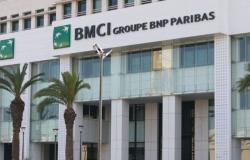Long established as a democratic imperative, the “republican barrier”, consisting of doing everything to prevent the National Front and then the RN from winning local or national elections, no longer seems relevant. While the dam strategy largely benefited Emmanuel Macron during the presidential elections of 2017 and 2022, it no longer seems to be winning.
The end of the Republican barrier strategy
In 2002, the Republican barrage allowed the outgoing president, Jacques Chirac, to collect a little more than 82% of the votes cast. The scarecrow figure of Jean-Marie Le Pen had pushed voters to opt for the right-wing candidate and had also boosted participation compared to the first round. 20 years later, the Republican dam was in trouble since Emmanuel Macron only obtained 58.5% of the votes in 2022 and participation fell between the two rounds. In 2024, the Republican barrier seems definitively buried, confirming the success of the strategy of demonization of the Lepéniste party.
Among those surveyed, Only 42% think that the arrival of Jordan Bardella at Matignon would be a bad thing. Paradoxically, only 28% of respondents want the president of the RN to become Prime Minister. Main illustration of the implosion of the Republican barrier, 29% of participants do not fear, but do not wish for the arrival of Jordan Bardella at the head of government. The far-right party therefore no longer acts as an absolute foil or even a threat for the majority of respondents. The Odoxa barometer highlights a form of resignation of voters who consider, at 56%, that the National Rally will be the majority force in the National Assembly.
The emergence of a barrier against the New Popular Front
The Odoxa barometer even shows a total reversal of the dam strategy. Indeed, the New Popular Front, the alliance between the main left-wing parties (PS, LFI, PCF and Ecologists) arouses significant rejection from sympathizers of the right, center and far-right. Indeed, 47% of respondents say they are ready to block the New Popular Front, compared to 44% for the presidential majority and only 41% for the RN. In other words, the National Rally is the political group least exposed to the blockade vote strategy. A total reversal compared to previous elections.
It is among supporters of the right and the center that the trend has been reversed, since 71% of Renaissance supporters are ready to block the New Popular Front compared to 65% for the National Rally. In the event of a duel, in the second round, between a candidate from the NFP and an RN candidate, supporters of the presidential party could therefore favor the candidate from the extreme right. Among LR supporters the trend is even stronger and 77% say they want to block the NFP compared to 45% for the RN. Finally, Jordan Bardella attracts support from 82% of right-wing and far-right supporters (UDI, LR, Debout la France, RN and Reconquête!). If the popularity of Jordan Bardella on the right can explain the decline in the barrier vote, Jean-Luc Mélenchon seems to be a scarecrow for a large part of those questioned. With 68% unfavorable opinions, Jean-Luc Mélenchon becomes the political figure causing the most rejection.
A favorable scenario for the National Rally
The decline in the logic of the “republican barrier”, coupled with an increase in participation, could greatly favor the National Rally and allow it to get closer to an absolute majority in the National Assembly. 81% of respondents say they are interested in the legislative elections of June 30 and July 7, a jump of 19% compared to the European vote at the beginning of the month. This renewed interest should result in a sharp increase in participation compared to 2022 when only 47.5% of registered voters voted. One of the main consequences of the increase in participation could result in an explosion in the number of triangulars, that is to say a second round involving three candidates. In order to qualify for the second round, a candidate must receive at least 12.5% of the votes of those registered in their constituency. If participation reaches 65%, the qualification threshold for the second round would therefore be around 18%..
—
Methodology :
Survey carried out online on June 19 and 20, 2024.
The barometer is based on a sample of 1,002 French people representative of the French population aged 18 and over. The representativeness of the sample is ensured by the quota method applied to the following variables: sex, age and profession of the interviewee after stratification by region and category of urban area.
Each survey presents a statistical uncertainty called margin of error. This margin of error means that the result of a survey lies, with a confidence level of 95%, on either side of the observed value. The margin of error depends on the sample size as well as the percentage observed. In a sample of 1000 people, if the observed percentage is 20% the margin of error is equal to 2.5%: the percentage real is therefore included in the interval [17,5 ; 22,5].







